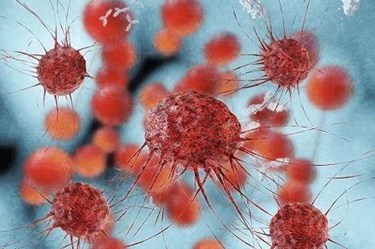Will Liquid Biopsies Transform Oncology Clinical Trials?

By Ed Miseta, Chief Editor, Clinical Leader

Epic Sciences says it has developed a technology that CEO Murali Prahalad believes will transform oncology trials by identifying and characterizing circulating tumor cells. Those cells have been long recognized as a key part of cancer metastasis. Tumors shed these cells into the circulatory system where they then travel to different parts of the body and, under the right conditions, become the genesis of new tumors.
“The idea behind our technology was to track these cells in a robust and reliable way,” states Prahalad. “If we could do that, researchers would have a leading indicator of where the cancer wanted to go as opposed to a lagging indicator of where it had gone.”
Over the past decade, a number of companies have tried to develop technologies to identify and characterize circulating tumor cells. Unfortunately, they were not sensitive enough or reproducible enough to be used in mainstream clinical research settings. Prahalad believes the reason is all these technologies made profound assumptions about what cancer is supposed to look like.
 “Some believed all cancer cells should have specific proteins on the surface, or they should be a specific size,” says Prahalad. “What we’re finding is that this is a very heterogeneous disease, and that heterogeneity in the cellular diversity is reflected in the circulating tumor cells as well. I think many researchers have been surprised by how diverse these circulating tumor cells really are.”
“Some believed all cancer cells should have specific proteins on the surface, or they should be a specific size,” says Prahalad. “What we’re finding is that this is a very heterogeneous disease, and that heterogeneity in the cellular diversity is reflected in the circulating tumor cells as well. I think many researchers have been surprised by how diverse these circulating tumor cells really are.”
Once these differences were discovered, Prahalad felt it was time for someone to step forward. “We don’t know what we don’t know, so let’s be biologically humble and look at every cell in the blood sample, including normal white blood cells as well as any cancer cells that may be present,” he says. “Then, using a combination of staining, imagery, and software, we can begin the process of distinguishing cancer cells from normal cells.”
Following In The Steps Of HIV Research
Epic Sciences worked for four and a half years with a hematologist to determine how to make that distinction. The company has now been able to take those insights and condense them into a set of rules-based algorithms which can be deployed at scale. The resulting technology is incredibly sensitive, reproducible, and allows researchers to peer into the cellular diversity of the disease. According to Prahalad, the advancements will allow physicians to treat cancer for what it really is.
“Cancer is not a single monolithic disease, but a collection of multiple-cell types that occur simultaneously in a patient, each of which will often have its own genetics,” he says. “The targeted therapies we develop work well and hit the cells with particular mutations they’re targeting. The problem is you simultaneously have other cell types in a patient that proliferate unabated, driving the disease to the next stage. At some level, it’s a game of cellular and molecular whack-a-mole. You hit one type of cell type that might be there and then others come up to take their place.”
Prahalad now believes Epic Sciences is now on the cusp of enabling for cancer what was done for HIV. Twenty years ago an HIV diagnosis was essentially a death sentence. Eventually, researchers developed singular drugs that hit the virus in specific ways, and which were then prescribed to patients one at a time. It seemed to work for a while, but then the disease would come roaring back as other viral variants took their place. The real breakthrough came with drug cocktails that would attack the virus in multiple ways and whose effectiveness could be tracked diagnostically. If a particular drug cocktail seemed to be ineffective, it could be replaced with another.
“New targeted therapies are in development or coming to fruition,” says Prahalad. “We can give them to patients one at a time and watch them fail one at a time. Or we can look at the full cellular diversity of a patient’s disease and, in a rational way, formulate combination therapies that will be most likely to work for them. This can really move the needle for patients and really transform how we address the disease.”
The process is quite technical. A standard 10 ml blood draw is obtained from patients. The red blood cells are not informative, so they are destroyed. What remains are normal white blood cells and any cancer cells that may exist. Those cells are then distributed across a series of proprietary slides with a chemical coating that Prahalad likens to molecular Velcro. This allows the cells to sit in a very even layer. After analysis, chemicals are added which allow the slides to be stored in a freezer indefinitely, turning the sample into a permanent record.
“Every slide has an average of 3 million cells on it,” says Prahalad. “When testing a sample, we stain them with a series of dyes that help distinguish cancer cells from normal cells. A high-speed imaging system allows researchers to view those millions of cells in less than 15 minutes. Software analyzes every cell using 90 different measurements. A number of measurements are taken of every cell, and what we’re really trying to do is find shape-based outliers, which is basically what a pathologist does. When you look at the staining patterns of these cells and which proteins are expressed where, the cancer pops out like a sore thumb against the millions of normal white blood cells.”
Promise For Oncology Clinical Trials
Above all else, Prahalad believes the technology Epic Sciences is bringing to market is transformative. But can it transform clinical trials?
Historically, clinical trials have placed patients with the same indication into studies to see who would respond. As knowledge of the disease became more refined, specific drugs were developed to target particular mutations. This led to examining whether a patient’s tumor expressed particular mutations.
But the challenge that still existed was the ability to look at a patient’s disease at critical time frames. When a patient is diagnosed, a biopsy of their original tumor would be taken at that time. But Prahalad notes when cancer is in the metastatic state, it has spread to multiple parts of the body and the cellular diversity that existed in the original tumor has now expanded exponentially. The disease is more diffused and more complicated at a cellular level. “If we go back and use the original diagnosis, it’s no wonder our clinical trials are not achieving the desired level of success,” he adds.
Therefore, it may be necessary to take a biopsy in 5 or 10 different locations on the body, and then do that 5 more times over the course of the trial. Most patients would likely not agree to that. With the liquid biopsy approach, it can now be done noninvasively. More importantly, a biopsy will often not produce enough cells to be properly analyzed. The liquid biopsy procedure eliminates that problem as well. A more comprehensive view of the patient’s disease will also allow investigators to better select patients for a trial and increase the success rate of the study.
Liquid Biopsy: A Patient-Centric Approach
While the liquid biopsy approach can bring greater success to trials while also saving lives, Prahalad argues it is also the right thing to do for patients.
“If we really want to take a patient-centric approach to trials, we cannot force patients to go through the horror of traditional biopsies,” he says. “Not for single tumors and certainly not for multiple tumors. It’s not humane. If we truly care about the patient experience, we have to move to liquid biopsies.”
“Right now we are letting our data do the talking,” adds Prahalad. “In 2015, our clients increased from 21 to 37, and that client list now includes Pfizer, Genentech, and LabCorp. Our clients are using the technology from Phase 1 up through Phase 3. When we show people what the technology can do for their trial, the response is generally very positive. We signed our first customer at the end of 2010 and have since worked with an increasing number of clients over a number of cancer types. Many of those trials are still in progress, but every customer has come back to do additional trials with the technology.”
As I was working on this article, Epic Sciences received additional good news. On July 8, 2016, Genomic Health struck a deal to commercialize the blood test, which has been found to detect a mutation associated with poor response to two new cancer treatments: Xtandi from Medivation and Astellas Pharma and Zytiga from Johnson & Johnson. A study published last month found patients who tested positive for the anomaly lived longer if they were treated with chemotherapy as opposed to Xtandi and Zytiga. Going forward, it could help patients and their physicians better decide between the various treatments.
